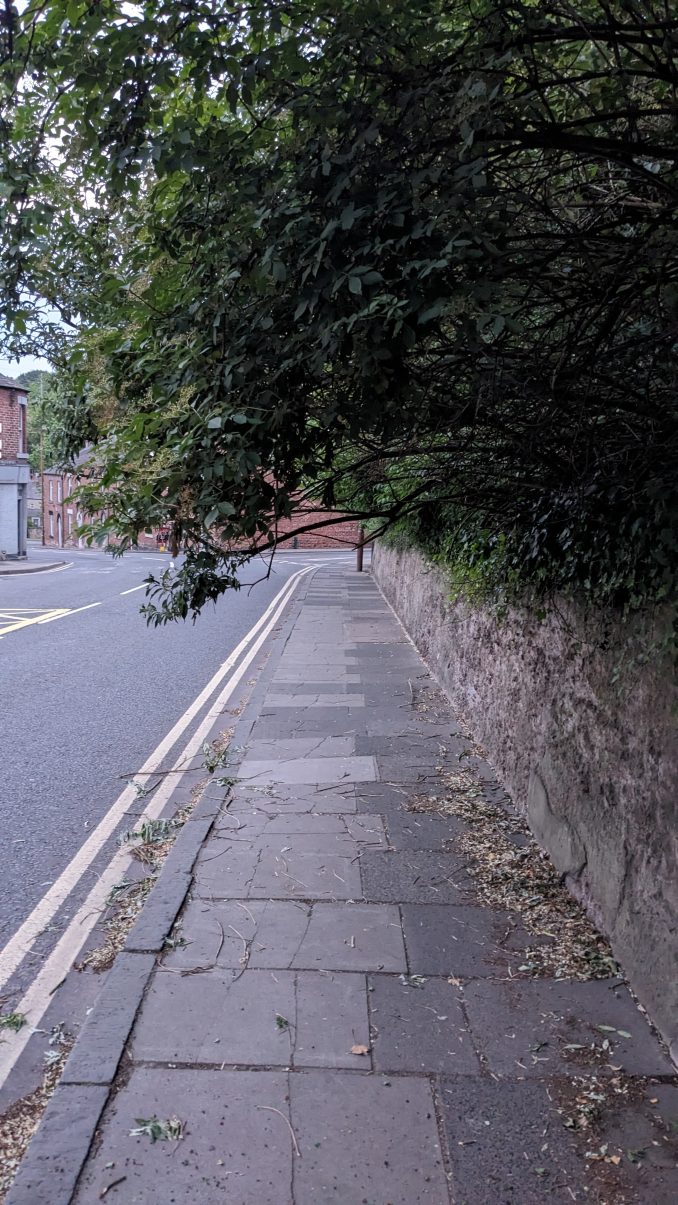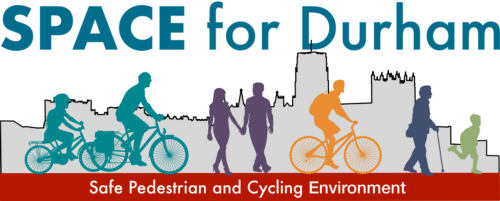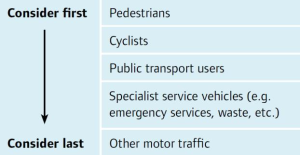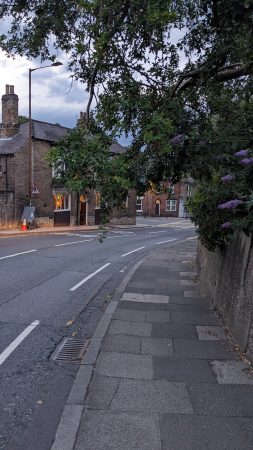
In 2019 Durham County Council adopted the Durham City Sustainable Transport Delivery Plan (DCSTDP) to guide the development of travel and transport within the city. Section 3.2 sets out the “Place and movement hierarchy” and follows the recommendations of Manual for Streets, which advocates a user hierarchy, based upon a priority for considering the needs of sustainable modes, as follows:
Pedestrians are top of the tree.
Unless, in practice, they are under a tree! Here, on the A690 at Alexandria Crescent, a road which forms part of the primary walking network according to the Durham City Local Cycling and Walking Infrastructure Plan (LCWIP), you currently have to duck under low-hanging branches, some of them dead, as you walk along the footway. And some of the branches even overhang the cycle lane, which is again part of the LCWIP’s primary cycling network.
It is a bit of a hassle to report problems like this to the County Council, but you can do it online. After reporting this problem recently, we were dismayed to be told:
On this occasion the is located on private land and therefore the Council is unable to remove it. As a result of this the service request has been closed.
If you wish to find out who is responsible for the land, you can do so by contacting the land registry on telephone number 0300 006 0422 or by visiting https://www.gov.uk/guidance/contact-hm-land-registry. Please note that the land registry does charge for this service.
The response then invited us to complete a short satisfaction survey.
The idea that private citizens should have to pay to discover the land owner, and then contact the land owner, in order to have the unobstructed use of the public highway restored to them is ridiculous. Pedestrians are supposed to be top priority in street design and access. Would the council really be leaving it to private citizens to deal with an obstruction if a tree was hanging off private land and blocking the carriageway?



Leave a Reply